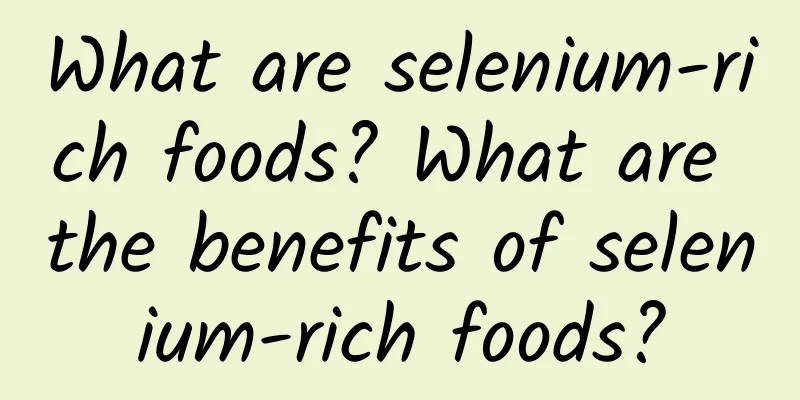What are selenium-rich foods? What are the benefits of selenium-rich foods?

|
Selenium-rich foods are foods rich in the trace element selenium. They are generally divided into natural selenium-rich foods and exogenous selenium-rich foods. The human body mainly obtains selenium from daily diet, so the selenium content in food directly affects people's daily selenium intake. Next, let's first understand the benefits of selenium-rich foods! Contents of this article 1. What are selenium-rich foods? 2. What are the benefits of selenium-rich foods? 3. What are the selenium-rich vegetables? 1What are selenium-rich foods?Selenium-rich foods are foods rich in the trace element selenium, which are generally divided into natural selenium-rich foods and exogenous selenium-rich foods. The human body mainly obtains selenium from daily diet, so the selenium content in food directly affects people's daily selenium intake. Foods rich in selenium include: selenium-enriched rice, 100 micrograms of selenium-enriched corn flour, selenium-enriched wheat, seafood, mushrooms, eggs, garlic, ginkgo, etc. Recommended dosage of selenium for different groups of people: 50 micrograms per day for preventing nutritional deficiency diseases, 100 micrograms per day for sub-health care, 200 micrograms per day for the prevention of major chronic diseases such as cancer, and more than 200 micrograms per day for intervention during treatment. 2What are the benefits of selenium-rich foodsThe benefits of selenium-rich foods include preventing and treating liver disease, protecting the liver, detoxifying and eliminating toxins, preventing Keshan disease, Kaschin-Beck disease, arthritis, preventing cardiovascular and cerebrovascular diseases, preventing cataracts, preventing diabetes, and enhancing immunity. Selenium-rich foods are foods rich in the trace element selenium. They are generally divided into natural selenium-rich foods (also known as plant-active selenium foods) and exogenous selenium-rich foods (also known as artificial organic selenium foods). For example, selenium-rich rice, black yam, black sesame, black beans, black peanuts, black rice, garlic, Canadian pork, etc. all contain selenium. 3What are selenium-rich vegetables?Selenium-rich vegetables refer to vegetables with high organic selenium content that are produced by organically introducing selenium into the plant's body during its natural growth stage through the method of biotransformation. These vegetables include seafood, mushrooms, eggs, garlic, ginkgo, day lily, shepherd's purse, peas, cabbage, pumpkin, carrot, leek, onion, tomato, lettuce, cabbage, and seaweed. |
<<: What is guava? Can guava help you lose weight?
>>: Scientific analysis: Why couples shouldn't take a shower together
Recommend
Can you get pregnant during menstruation?
When a woman has her period, it means that her bo...
Do pregnant women need to take glucose tolerance test?
For the sake of their own health and the health o...
How can good blood suddenly turn white?
Mr. Gao (pseudonym) has a lot of work pressure an...
Why does it hurt inside the wound 40 days after a cesarean section?
After a cesarean section, a wound will be left on...
What are the early symptoms of endometrial polyps?
Many women may experience symptoms such as abnorm...
Is cervical erosion a gynecological disease?
Among many gynecological diseases, the most commo...
What are the symptoms of mammary duct spasm?
For many women, their body resistance will immedi...
How to make grilled fish? How to make grilled fish with pickled cabbage flavor on paper?
The cooking method of the fish is unusual, the sp...
How to prevent breast cancer?
How to prevent breast cancer? In addition to exam...
How to relieve postpartum belly pain?
After giving birth, women often feel intermittent...
What to do if you have phlegm in your throat during pregnancy
We all know that pregnant women need to pay speci...
Will athlete's foot in pregnant women affect the fetus?
Generally speaking, when a pregnant woman suffers...
What to do if breast milk swells and hurts after a normal birth
Natural birth is the best way of childbirth, beca...
Why is my right nipple itchy?
Women’s breast health is particularly important. ...
How to shrink the uterus
The uterus is a very important organ in the femal...









